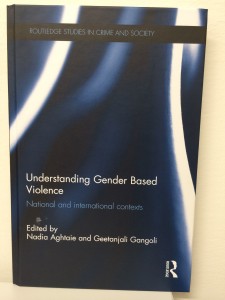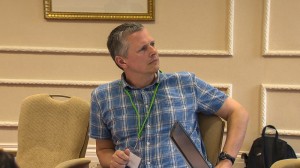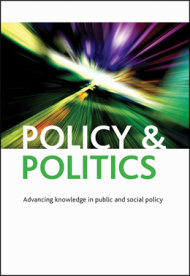School for Policy Studies academics work with a range of local interests. Playing out is a non-for-profit Bristol based organisation that encourages street play in the UK. Naomi Fuller, from playing out, has written this blog about how their work with the School is helping them to capture the benefits of such activity.
I stood turning the skipping rope for ages at our last playing out session. Tall ten-year-olds and sturdy toddlers queued to have a go at jumping in as I chanted “Mickey Mouse Built a House” on request. I watched them – some skipping deftly, others stopping and starting with the rope getting tangled, some squatting down to do some chalking close by while they waited and I wondered whether it was possible to unpick what was going on. Of course they were having fun, giggling and trying to hold hands and skip together, then running out of the turning rope to add chalked horns to the rainbow-coloured cow they had drawn together in the middle of the street. But is there any way to measure this activity. And is there any need?
A conference hosted recently by University of Bristol gave some clear answers to these questions. The event was called “Outdoors and Active: Delivering public health outcomes by increasing children’s active travel and outdoor play”. It gathered people working in local authority public health teams, education and play services to share new research showing beyond doubt that children at playing out sessions are getting more exercise and activity than they would if they were indoors during that same period. Dr Angie Page and Professor Ashley Cooper are lead researchers for the PEACH project, a long term study examining the links between the different physical environments children spend time in and how active they are in them. They and their team have already measured children’s activity levels on their school journeys – whether in cars, on foot or by bike, during the school day and in the after-school period, examining the length of time they spend outdoors and indoors and exactly how much physical exercise they do.
To carry out these studies and gather the data they need, researchers have kitted children out with GPS tracking devices which show precisely their location at every stage of their journey. Children have also worn ‘accelerometers’ which measure the intensity of their exercise and activity. Recently Angie and her research team have turned their attention to street play – visiting playing out sessions to measure the intensity and type of physical activity children are doing. As well as equipping the children with the technical kit, her team interviewed parents and children about their activity patterns and habits.
It’s the levels of ‘moderate to vigorous physical activity’ (MVPA) that are a key focus. Government guidelines are clear: children between five and eighteen need to get at least an hour’s MPVA each day to ensure they are healthy. But very few are managing this and recent figures show just 14% of boys and 8% of girls are doing so. And these levels of inactivity are increasingly worrying for children’s long-term health and wellbeing. During a playing out session MVPA is the energetic play we often see; the skipping, scooting, hopscotch and playing tag as you would expect. But it’s brisk walking and similar types of activity as well and lots of imaginative games would include periods of MVPA as I’ve observed on my own street when make believe wizards and witches take to their broomsticks after huddling over a pretend cauldron for a while. The University of Bristol data shows;
- Children are three to five times more active outdoors than indoors
- Time spent outdoors with friends is linked to an increase in children’s physical activity levels
- During playing out sessions children spent 30% of their time in moderate to vigorous physical activity (MVPA) and another 15% in light activity.
- This compares to 5% of time indoors usually spent in MVPA
 Angie Page introduced some important questions in presenting these findings. First was the notion of ‘subsitutional replacement’. Put in lay terms the issue is whether the children at the playing out session would have got their physical activity in another place such as their garden or local park if they hadn’t been playing in the street that day. The clear answer was no. The responses from parents and children showed that the playing out session was usually an alternative to a less active option – watching TV or another sedentary indoor activity.
Angie Page introduced some important questions in presenting these findings. First was the notion of ‘subsitutional replacement’. Put in lay terms the issue is whether the children at the playing out session would have got their physical activity in another place such as their garden or local park if they hadn’t been playing in the street that day. The clear answer was no. The responses from parents and children showed that the playing out session was usually an alternative to a less active option – watching TV or another sedentary indoor activity.
And the other intriguing question was around the idea of ‘compensation’. This is the question of whether being active during a playing out session means children flop on the sofa for longer afterwards and are ironically less active than they would have been normally (as many adults often are after a gym session!). Again the data showed that this did not happen to the children playing out and that they did not have a pattern of doing less activity after playing out to ‘compensate’ for the more vigorous play they had done.
Professor Kevin Fenton, Director of Health and Wellbeing at Public Health England closed the conference by starkly stressing the urgency of improving children’s levels of physical activity and the need to make active play the norm once more. “It’s often said that the environment is an important health service,” said Professor Fenton. And he talked about both green spaces and urban spaces like streets, needing to be seen in this way – as potentially health-giving spaces for those spending time in them. The challenge both for the audience gathered at the conference, and for policy-makers and public health commissioners, is to support the idea of street environments as a ‘health service’ and to act on the growing body of research and data which clearly shows the benefits of street play. The evidence is there – not that anyone who has watched a playing out session has ever doubted it.
A few days after the conference my street played out again and this time as I watched the pink-cheeked skippers, legs blurred as they jumped faster and faster it felt inspiring to realise that what they were doing – so naturally and with so much fun – is part of something increasingly important to researchers and policy makers. You can read more about the University of Bristol’s research findings here. If you want to know how to support street play in your street, or work for an organisation interested in finding out more do get in touch.
This piece was originally posted on the playing out blog.









